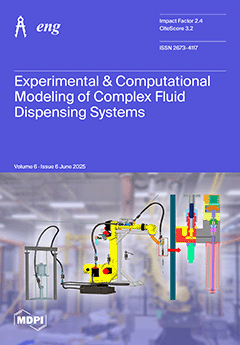To date, few studies have been carried out on the influence of the mixing effects of soils and remediation agents on the remediation effects of benzo[a]pyrene (B[a]P) in contaminated soils. In this study, the mixing effects of soils and remediation agents and the
[...] Read more.
To date, few studies have been carried out on the influence of the mixing effects of soils and remediation agents on the remediation effects of benzo[a]pyrene (B[a]P) in contaminated soils. In this study, the mixing effects of soils and remediation agents and the degradation effects of B[a]P under different stirring conditions were investigated by combining stirring tests with discrete element method (DEM) simulation. The results from the stirring tests indicated that the mixing effects of two-stage (C
Drill) drill bits were better than first-stage one-line (A
Drill) and first-stage cruciform (B
Drill) drill bits. The mixing quality of C
Drill at the drilling/raising rates of 2, 2.5, 3, 4, and 7.5 cm/min were 42.13%, 43.20%, 43.98%, and 43.30%, respectively. In terms of the results from the B[a]P oxidation remediation tests, the contaminated soils mixed with C
Dril have better remediation effects for B[a]p than those mixed with A
Dril and B
Dril, since B[a]p in contaminated soils stirred and mixed using C
Drill could not be detected after oxidative degradation. The present study results have proved that the mixing effects of soils and remediation agents could significantly affect the remediation effects of contaminated soils with polycyclic aromatic hydrocarbons (PAHs).
Full article





